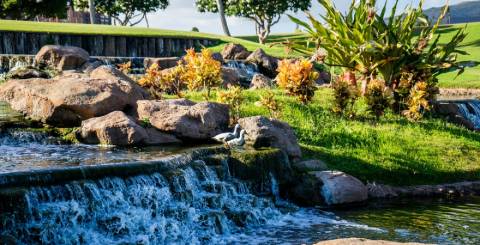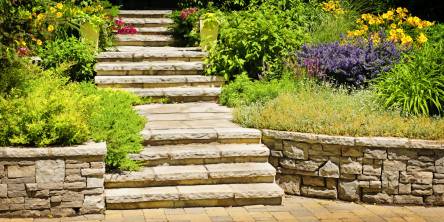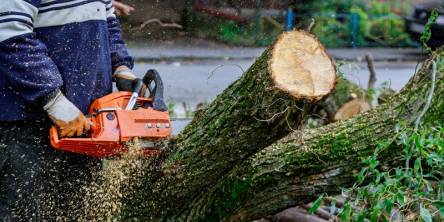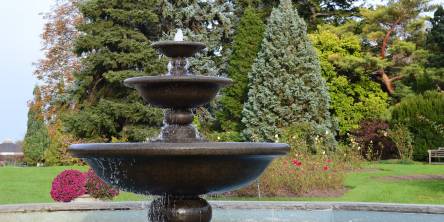How to Design Your Perfect Garden Landscape

When you watch a landscaping show on TV, it seems so easy to design a landscape to your liking. All you have to do is gather a few friends, get the right gardening gear, make some holes here and there, and plant a few plants. In reality, garden designing is harder and there are high chances of failure. If you want to create a sensational garden, you should follow tips and steps that show you how to create the perfect garden landscape.
Here are some useful tips from landscaping experts that will help you keep your savings and teach you how to landscape.
Have a Realistic Budget
Before you even think of starting a landscaping project, think if you can afford it. Decide how much money you can spend on renovating the design of your garden and set e realistic budget. Sometimes people just buy plants, materials, rent equipment, and when they calculate the total costs, the numbers jump to the ceiling. Landscape garden design can be quite pricy and you need to have a clear idea of how much you can spend on your dream yard. For instance, if you want to make a 15' x 15' garden bad, you will need between 15 to 20 bags of mulch. In the UK, a bag of mulch will cost you around £7. Now multiply that by the number of bags you need and see how your bank account cries. And this is only for simple garden mulch. Imagine how much you will need to spend on other stuff to complete your yard landscape.
Make a List of What You Want and Need
After you set a realistic budget, you need to make a list of what you need and want for your landscaping ideas. Think about what features do you want your garden to have and how are you going to use it. Do you want pavement, posh flower beds, or rolls with fruit and vegetable plants? Maybe you have children or pets? Think about their needs and think a landscape that offers friendly environment. Don't just go for things you see in fancy garden magazines and think if you'll be able to maintain the whole garden after you're done with the improvements. Sure, you can spend money and get a paved pathway, pool and exotic plants, but it won't be wroth if you can't manage the cost for garden maintenance.
You can even draw a picture of your ideal backyard landscape and keep it as a draft plan. You can also think of front yard design to make your property more attractive. Keep that landscape plan and stick to it.
Study the Elements
Beginner gardeners and landscapers make common mistakes. One of the biggest errors you can make is to forget about the elements. You should pay special attention to the sun, wind and rain. If you live in a sunny area and make a patio on the side of the house that gets sunshine in the afternoon, you are going to have it tough and hot in August. Also, don't plan on placing your brand new barbeque next to a windy corner. You won't be able to light a single match. Don't forget to observe where water falls when it rains. Make sure your gutters are clean, or you will have troubles with unwanted waterfalls in your garden landscape and damages to the facade of the house. Check how the elements will affect your backyard landscape design before you begin to work on it.
Don't rush things, either. Remember the landscape plan you made. Go through it and check if your wants and needs match the conditions you offer. There's a high chance some of them won't be suitable for your design after you study the elements. Find the perfect way to make your landscape interact with Nature's forces and gain benefit from it.
Start Small
Don't throw yourself in deep water. Home and garden TV shows tend to blur the whole idea of landscape improvements. They show that you can transform a huge yard into the gardens of Eden in 30 minutes (commercial time included). In reality, it takes hours, even days, to transform such a big place. Don't think that you can do the same in your garden. Instead, pick a small place that you are 100% sure you can improve and maintain after the landscape changes.
Start with small landscape improvements. Add colours with new flower beds or freshen up your lawn. Pick some annuals or grass and plant them around trees or along the pathway. Here's a tip – it's better to get low-maintenance perennials. They come back each year and don't require a lot of attention. Those kinds of yard landscaping projects don't take too long to make and won't cost you too much. Once you complete a smaller landscape, it gives you the confidence to try something bigger.
Size and Scale Matter
Another mistake made by landscaping newbies is to underestimate scale and size. They can't fight the right proportions between plant space,decks and pathways. You can also make the same error and don't leave enough open space for gardening and planting greens.
Try not to plant trees and shrubs that tend to grow too high or too wide. They will overpower the whole yard and make it too shady and gloomy. Pick ones that you will be able to maintain by yourself. Also, flower and garden beds are never too big. According to landscape professionals, landscape novices make flower beds too small and end up with n empty lawn that needs a lot of care.
You should focus on how you scale the landscape elements and how you space stem. Think about the pacing too. These things will complete your garden design and create a pulled-together look. Play with different shapes and colours, sizes and plants. You can repeat different features, but try not to make the whole landscape picture too monotonus and same-looking. You can draw some inspiration from Japanese gardens and see how they have a balance between nature and decorations.
Thinks Outside of The Landscape Box
Be open to new ideas and think outside of the box. Always be honest with yourself about the things you like and would want in your garden. However, don't go overboard with all the decorations and improvements. Think of different garden upcycle ideas that you can incorporate in your new landscape. Don't forget to follow your landscaping plan and don't go beyond your budget. Don't be fed up some of your ideas don't work out and be open to change them with something else. The most important thing is to be patient and have a realistic view of the end result.
Similar Articles
A well-designed garden has the power to transform not only your outdoor space but also your lifestyle.
Embarking on a landscaping project is an exciting journey, whether you’re revamping your front yard, designing a tranquil retreat, or creating an outdoor entertainment space. However, one crucial decision often presents itself early on: should you take the DIY route or enlist the expertise of a professional landscaper?
Have you ever looked at a tree in your yard and thought, 'Maybe it's time for that to go?' Perhaps it's causing more mess than it's worth, getting too big for its boots, or simply not fitting your vision for your outdoor space.
In today’s world, sustainability is no longer just a trend it's a necessity. As travelers become more eco-conscious, businesses in the tourism and leisure industries, especially resorts and parks, are adopting greener practices to stay relevant and competitive.
Enhance your outdoor space with expert landscaping. Create a beautiful, functional retreat with the right plants, hardscaping, lighting, and design principles.
Discover the unseen value of outdoor benches in enhancing public spaces, fostering community, boosting economy, and promoting sustainability with smart design.
In order to turn outside areas into stunning, practical, and sustainable settings, professional landscaping businesses are essential. Their knowledge extends beyond aesthetics; they can handle anything from hardscape building to plant health.
Discover VersiScape: a groundbreaking solution revolutionizing urban landscaping with green walls, roofs, stormwater management, and sustainable design.
Discover why quality landscaping supplies are essential for a stunning yard. Learn how the right tools, soil, and materials can transform your garden.









